DETAILS
Genre: Casual, Merge-3
Format: Single Player Idle Game
Platform: iOS, Android
------------------------------------------------------------------------------------------------------------------------------------------------------
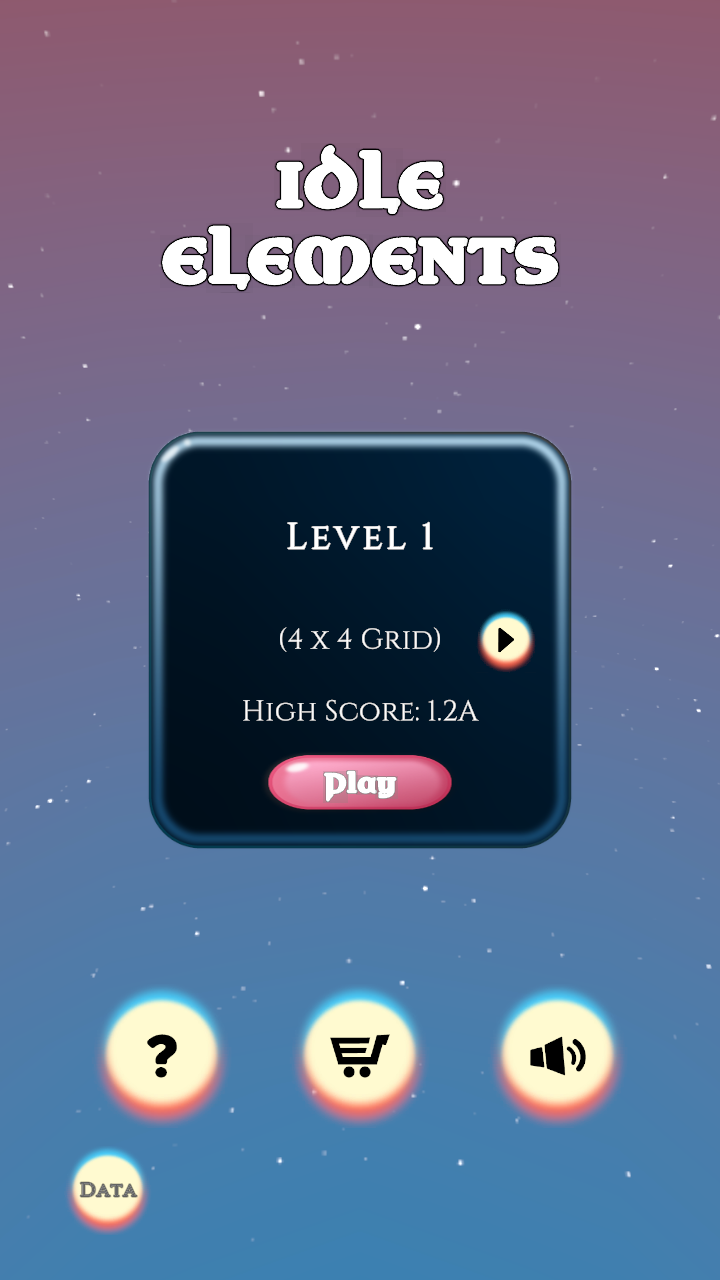
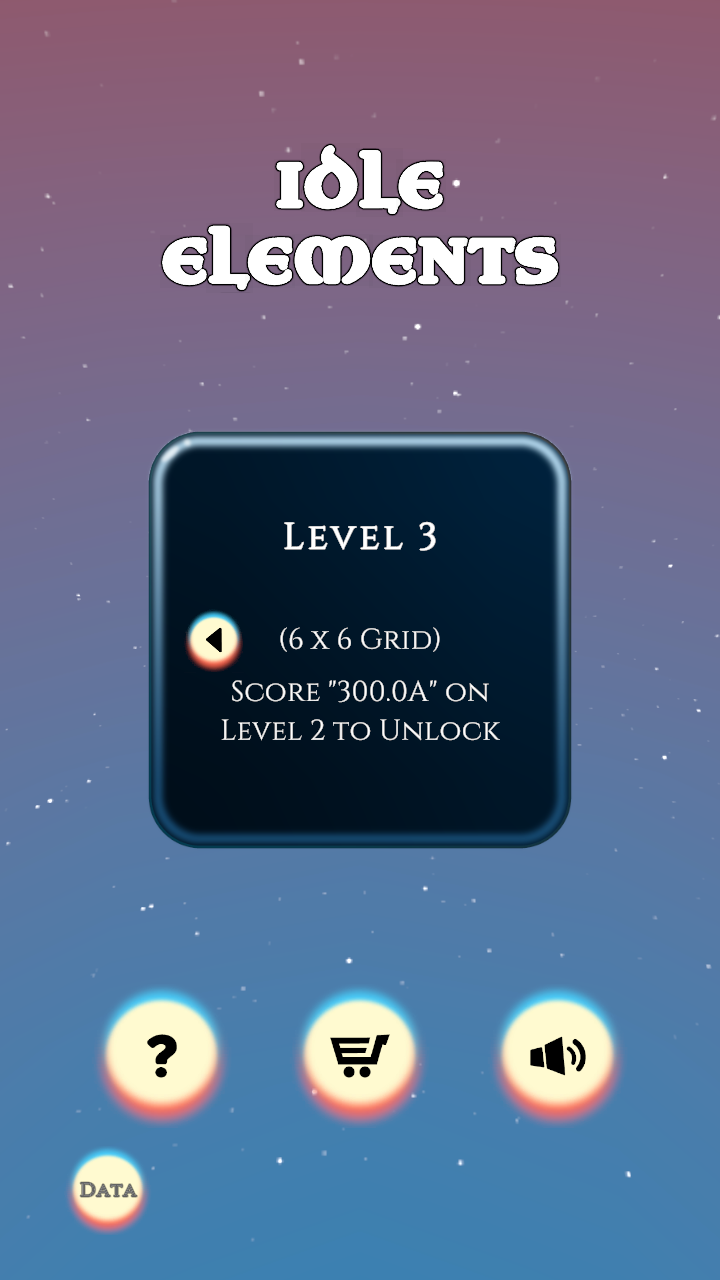

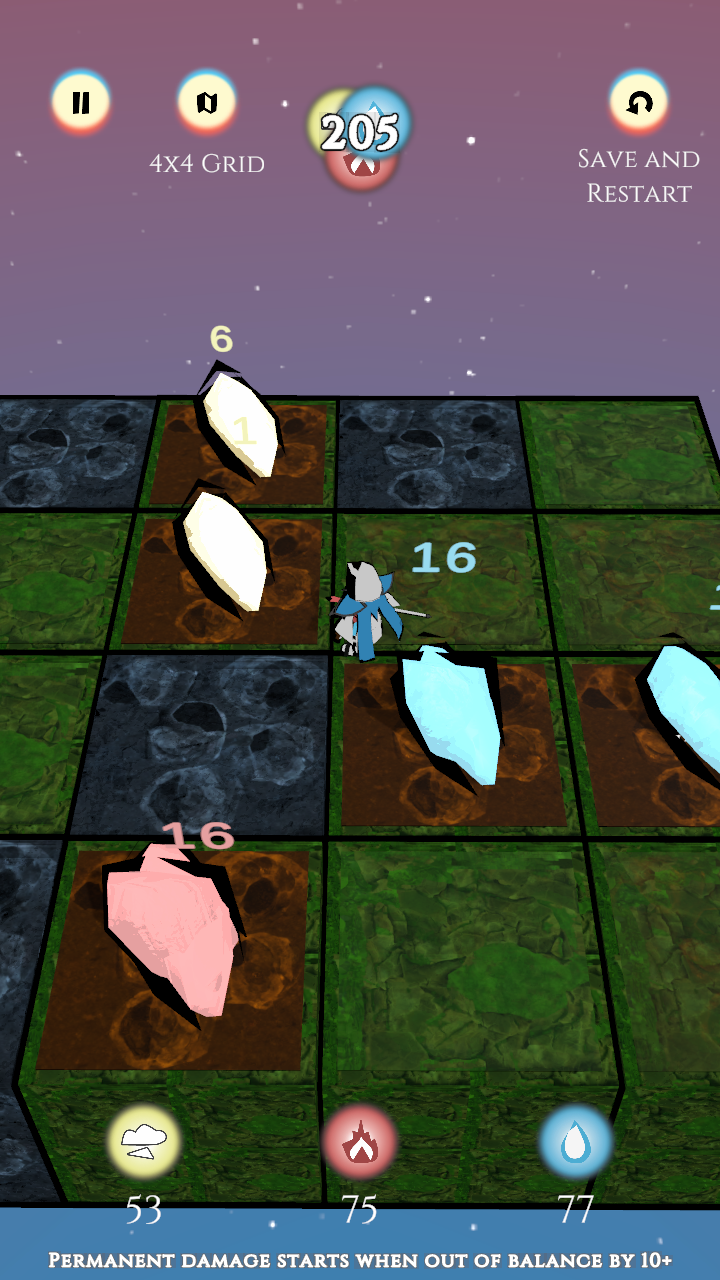

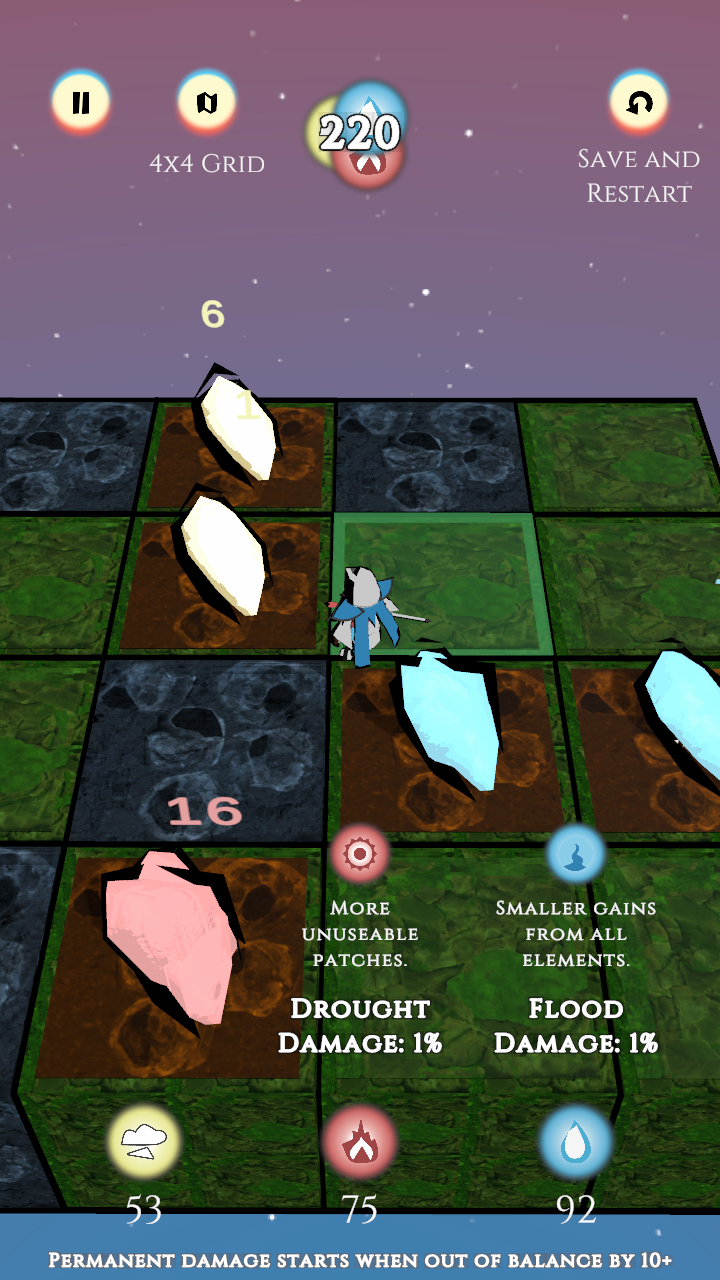

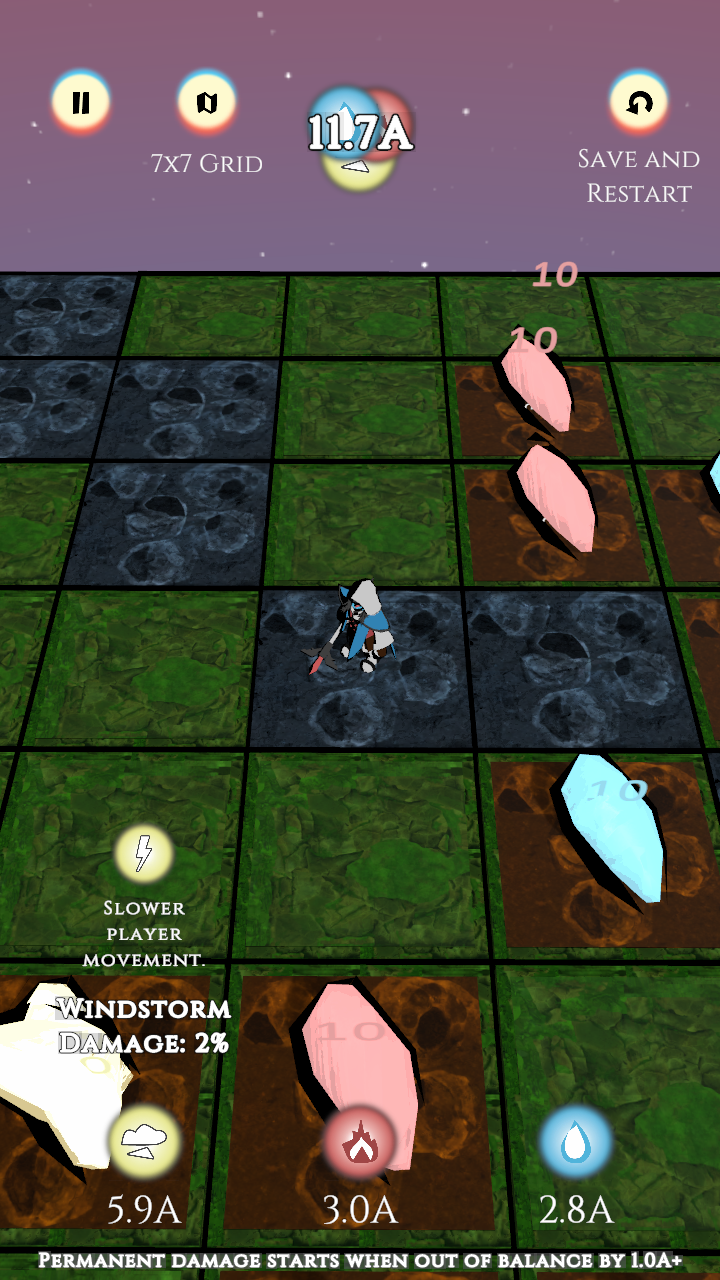
DESIGN TENETS
* Strategic
* Climate Change
* Inevitable
The intention behind this game was to make an idle game with a more strategic component about climate change.
I wanted to speak on climate change, but I wanted to go deeper instead of be critical of others beliefs, or prescribe some minimally effective lifestyle changes, I wanted to speak matter of factly and critically of what is: real and inevitable.
The players are able to plant elemental crystals in order to earn elemental power. Just like traditional idle games, these crystals will generate power over time, to an absurdly large value. However, elemental power is also tallied on an individual level of air, fire, and water, and should there exist an abundance of one element drastically over the others, the play area itself will begin to alter.
Levels are also a part of the idle game feel, where each level increases the grid size by 1x1, reaching all the way to level 96 for a 99x99 grid.
------------------------------------------------------------------------------------------------------------------------------------------------------
GAMEPLAY HIGHLIGHTS
------------------------------------------------------------------------------------------------------------------------------------------------------
GAMEPLAY HIGHLIGHT: IDLE NUMBERS
Design tenets: strategic, climate change, inevitable.
At the core this is an "idle game," so it features to important components: a repetitive action and big numbers. Due to the spatial element of this game, that action needed to be something that actually considers the space it is in. Thus, the merging mechanic was born. In order to earn elemental power, the player must plant elemental crystals on an available cell of the grid. Like in other merge-3 games, 3 or more items that are adjacent to each other will merge into an "improved" version. Here merging serves the same purposes as "upgrading" generators in traditional idle games; the upgraded crystal will earn more elemental power for the player.
Now, the big numbers. In traditional idle games, the player earns some asset at an almost exponential rate, reaching absurdly big numbers. But, I did not want to make just a "Cookie Clicker" or "Adventure Capitalist" clone with patronizing messaging, so there needed to be a drastic gameplay change. In other idle games, the assets serve both as currency and reward; the player earns an asset in order to spend that same asset on ways to get more. Here, the sole focus would be on progression of that asset, on elemental power; the player cannot "spend" elemental power or make these ridiculously large numbers decrease, the cost would be something else.
------------------------------------------------------------------------------------------------------------------------------------------------------
GAMEPLAY HIGHLIGHT: EQUILIBRIUM
Design tenets: strategic, climate change, inevitable.
There is a cost to these big numbers: equilibrium. Earning more of one element over the others will change the balance of the elements, and alter play in accordance with the penalty of that element.
The reason for this is simple, I did not want the cost of earning more elemental power to be some additional resource in which to earn and deplete, it needed to mirror the issue of climate change in a real way. In reality, humanity will always evolve and progress, and it will be at the expense of mother nature in someway. That does not mean we shouldn't evolve or progress, (we may even be unable to help ourselves), in fact, we just will. And with that the player is not punished for progressing or earning more elemental power, they are given agency and freedom, just like we have as humans. The cost then, was to exactly the bounds in which they could exercise this freedom and agency.
The player is free to take any action they want, but they could be slowed down. The player is free to take any action they want, but the areas in which they could access could be limited. The player is free to take any action they want, but they could limit the effectiveness of each decision. And all in all, the player would be free always to take any action they want, but eventually and always, those actions will effect them.
------------------------------------------------------------------------------------------------------------------------------------------------------
GAMEPLAY HIGHLIGHT: MAP
Design tenets: strategic, climate change, inevitable.
Two things to consider: for idle games, reaching "prestige" or starting over with additional game incentives and buffs is common; and for merge-3 games, understanding the play area is crucial. The player is able to reach up to level 96, with a 99x99 grid, where crystals start with 1e50 before merged and the threshold for triggering a lack of equilibrium penalty is higher. What that means is though, there are 9801 cells for the player to traverse and keep track of. The solution: an interactive mini map.
The player is able to use a mini map to zoom in and out of the grid, where they are able to see cells on an individual level, as well as clusters in which the predominant element is shown, with its number. This allows players to designate areas of the map to certain elements and maintain a sense of control and strategize. The mini map shows the grid either as a 3x3, 4x4, 5x5, depending on the level of zoom and the total size of the grid (i.e. level 1 is a 4x4 mini map in which cannot be zoomed further; and level 99 is a 5x5 grid when zooming completely in, showing the most immediate grid cells, and is a 3x3 grid when zooming completely out to see the entire map, showing 33x33 subsections of the grid as a single cell.
------------------------------------------------------------------------------------------------------------------------------------------------------
ENGINEERING HIGHLIGHTS
------------------------------------------------------------------------------------------------------------------------------------------------------
ENGINEERING HIGHLIGHT: CALCULATED GAME BALANCE
It is simple enough to create data structures for extremely large numbers, assigning a mantissa and exponential value with a level of significant digits that allow for the handling of numbers greater than 1e308. The complexity arrives with game balance. As the player increases in level, the grid also increases as well as the base yield for an elemental crystal and the threshold to consider an element "out of balance." The mission was to find some ratio for the increase of these numbers and still maintain a feeling of "progression" or difficulty as the level increases.
The right balance of these numbers are needed as the intensity and fun of the game being "close" to being out of equilibrium, and trying to strategize to regain that balance. In order to taper this progression, the equation of base yield of a crystal is 1e(level + 3 / log(x + 3)) and the equation for the out of balance threshold is 1e(level + 3 / log(x + 2) + 1).
The first graph shown shows how many times a crystal is merged before it reaches that threshold. The second graph shows how many cells are available at the start of each level. The third is the most crucial as it considers the two previous ones; it effectively illustrates the duration of each game before an element reaches 100% damage by calculating the amount of matches / merges it takes of EACH element, before the next one inevitably triggers a damage penalty. The calculations here consider a third of the grid for each element.
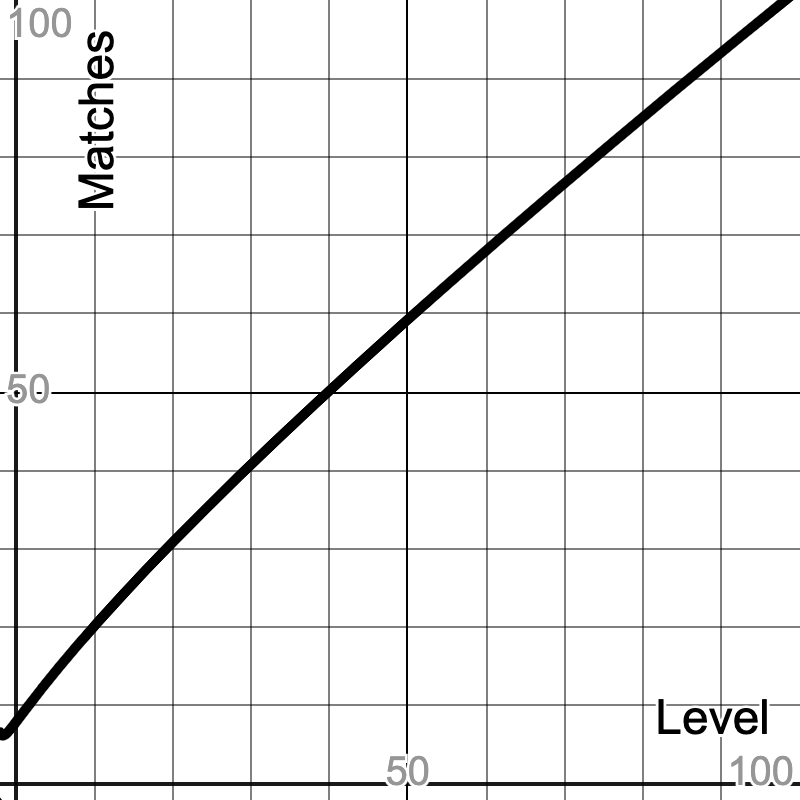
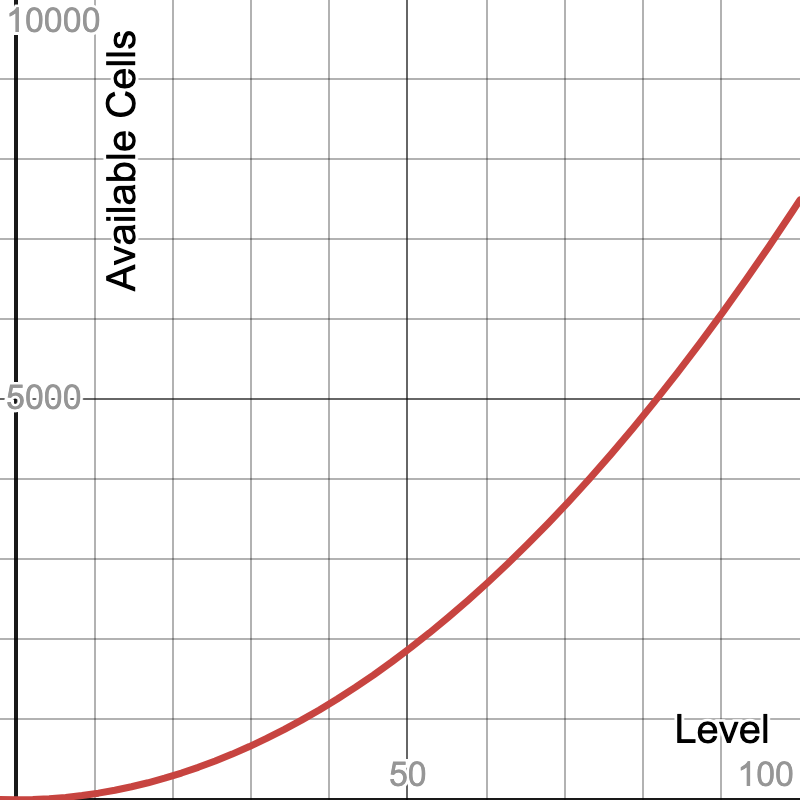
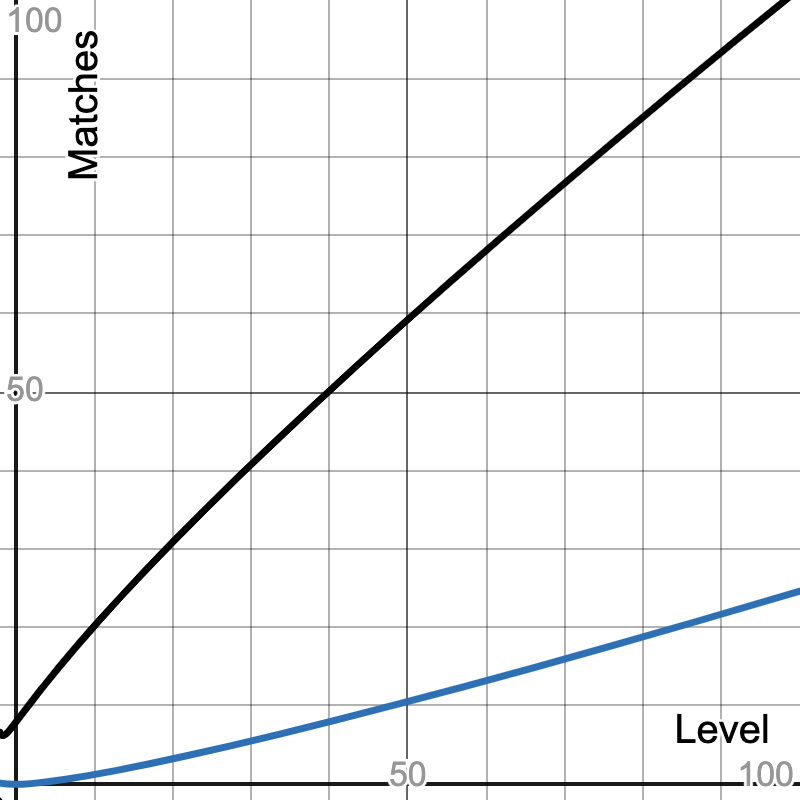
------------------------------------------------------------------------------------------------------------------------------------------------------
ENGINEERING HIGHLIGHT: POWER OF 10 LOOKUP TABLE
Due to the large amount of data used to store these large numbers, mathematical operations start to become expensive. One way this game optimizes speed is by caching doubles based on a power of 255 to quickly multiply and divide doubles by large numbers.
Doubles have a maximum value of approximately 1e308, and while it may seem easy to convert doubles into a "LargeInt" by storing a double mantissa and an integer exponent, the nature of idle games require that these numbers be "normalized" or in other words, be represented by small mantissa values (usually less than 1000), which means that these doubles are constantly being multiplied and divided.
------------------------------------------------------------------------------------------------------------------------------------------------------